An air purifier cleans the air by taking out dust, pollen, and bacteria. This helps make the air inside your home healthier.
You may be considering an air purifier in your home for a number of reasons. Perhaps you or someone in your household is suffering from allergies which can make the spring and summer months difficult and uncomfortable.
Alternatively, you might live in a highly polluted area like an inner city or close to a major motorway.
It might be that you are a smoker and want to protect your family’s health.
Or, you could simply want to offer your family the highest quality air and comfortable home environment.
An air purifier for home is a great option for a multitude of reasons. Clean the air in your home, reduce bacteria and viruses, remove allergens and particles. By doing so, you’ll be breathing in cleaner, better quality air at home.
What does an air purifier do?
In the UK, air purifiers are becoming more common in the home. People are realising the benefits they bring in terms of improving indoor air quality. Air Purifiers are designed to trap tiny particles that are in the air in your home and push cleaner, filtered air back out.
Girl blowing her nose: Air Purifiers are a great solution to help with common allergies like hay fever.
The air in your home contains a wide range of particles. There are different air purifiers and filters available to target different types of particles.
There are tiny particles, around 0.03 micrometers in diameter. There will almost certainly be dust mites and allergens like pollen within this range at home. If you have pets, your air will also be populated with pet dander from fur and skin. Almost every air purifier is designed to remove particles of this size.
The second type of particle is even smaller: categorised as volatile organic compounds (VOCs). VOCs can easily get into the air from daily life. They can include aerosol sprays, cigarette smoke and even cleaning chemicals.
If you live near a busy road, for example, there will also be particles that come from vehicle pollution. If you have any smokers at home, even if you are doing DIY, you will be contributing to your indoor air quality.
There are a lot of things floating around in the air you breathe every day. Air purifiers are engineered to remove these particles and provide you with clean, purified air.
How does an air purifier actually work?
The general science is that an air purifier can remove these particles (microbes and VOCs) by filtering air through a series of filters. They disperse the cleaner air and improve your home environment. In doing so, you should see symptoms of airborne allergies and respiratory conditions reduced and your health improved.
Not all models work in the same way. Deciding which is the best air purifier for you, depends on a few factors. These include filter type, your allergy, your room size and the quality of air you want to achieve.
The more layers of filters and the higher the quality filters in your air purifier, will remove more airborne nasties.
As well as different filters, many air purifiers may use ionisers to keep the air clean. This release of negative ions clumps particles together so they are easier to capture. Ultraviolet (UV) light neutralises bacteria and viruses by breaking down their DNA. These technologies help HEPA filters clean the air. They lower allergens, germs, and pollutants to make your home healthier.
Everything from dust filters to allergy HEPA filters, you’ll find these cleaning capabilities in our MeacoClean Air Purifiers.
What are the different air purifier filters available?
As we saw, there are two main types of particles in the air to filter out. So too, are there two main filter types.
Firstly, air will be drawn into your unit and passed through an initial filter or ‘dust filter’, often found on the product casing. This is just to remove those larger particles like dust and hair. This helps to keep the unit running smoothly. You don’t want dust getting into the internal components!
Secondly, your air purifier will likely contain a HEPA filter. These are especially good at removing allergens such as pollen and pet dander.
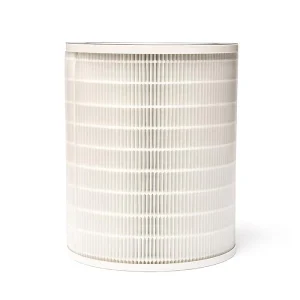
HEPA filters are for air purifiers and combined air purifier and dehumidifier models. They can all look very different.
HEPA filters are graded based on their efficiency in trapping microscopic particles. An H11 filter captures around 95% of airborne pollutants, making it effective at cleaning your room air. H13 HEPA filters are superior and medical-grade, trapping 99.97% of allergens, bacteria, and fine dust. This higher filtration level is crucial for air purifiers, especially for allergy sufferers and those with respiratory conditions. Read more about air purifiers for allergies on our blog.
Our MeacoClean 76×5 Air Purifier and Arete® range of combined dehumidifiers and air purifiers, come with medical-grade H13 HEPA filters as standard.
You can also buy replacement filters on our website. Shop for air purifier filters or for dehumidifier filters.
Some air purifiers are also equipped with a Charcoal Filter. Air purifiers with carbon work by using activated filters to absorb gases, odours, and volatile organic compounds (VOCs) from the air. Their porous structure catches harmful molecules. This helps reduce household smells, cigarette smoke and even chemical pollutants. It makes the air in your home cleaner and healthier to breathe.
The MeacoClean 47×5 has a charcoal filter that reduces those airborne nasties and bad odours.
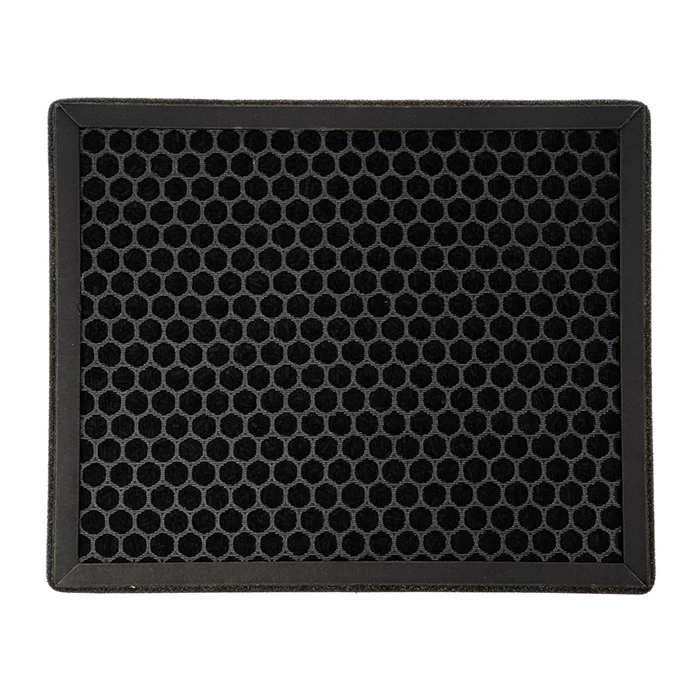
Charcoal filters often have the same facing. They will be textured, here with hexagons, and made from a carbon compound to extract VOCs.
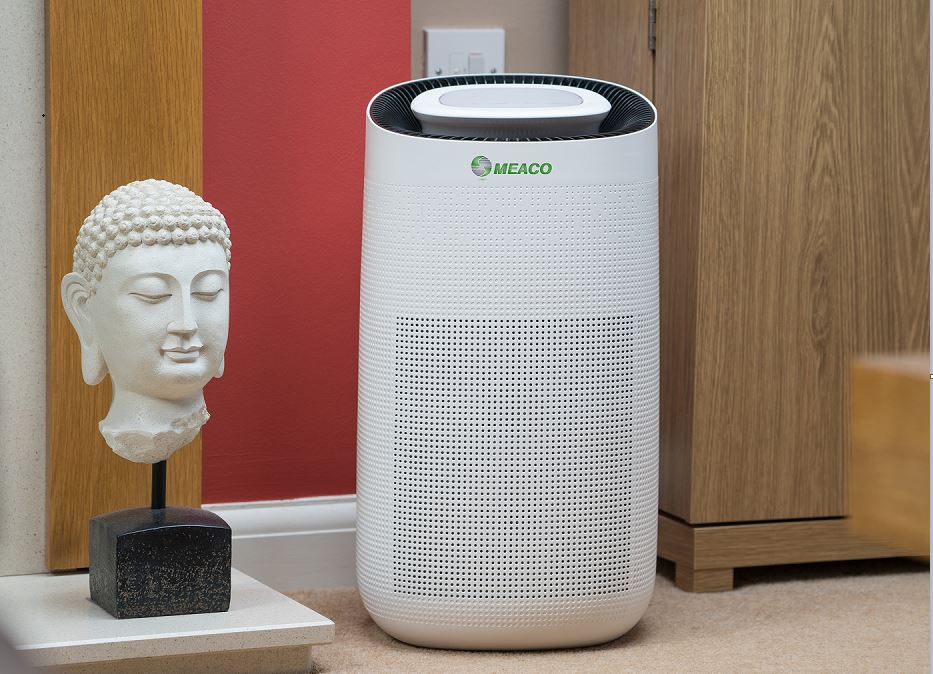
Air purifiers can help to reduce pollutants and bad smells in the home and improve health. This is the MeacoClean 76×5 Air Purifier in the living room.
What are the differences between air purifiers on the market?
The main differences between the air purifiers available come down to how they purify. What kind of filters and other internal components they have. You may be considering:
- Sizes – you may be looking for a compact unit for a bedside or larger one offering higher performance
- Purification Rates – generally dictated by the size of the unit, you may be looking for an air purifier with multiple air changes per hour and therefore high performance
- Filters – depending on your needs, you may prioritise using an H13 HEPA filter over a charcoal filter
It’s important to pay attention to these differences and how they will solve your particular needs. Whether that is pollution, allergies or general air quality.
When should you use an air purifier?
Air purifiers are incredibly versatile, they can be used all year around and will work well in most homes.
Anytime you’re concerned about the quality of the air in your home, for any reason, it’s worth considering an air purifier. Clean air offers numerous health benefits. It will certainly help to reduce the quantity of unfriendly particles in the air, giving you a fresher, cleaner air environment.
You don’t have to keep it switched on all the time – it’s easy to set up a routine.
Remember to keep doors and windows closed to allow your air purifier to work at the highest performance and clean the air in the room – not the air coming in from an open window.
By investing in a low noise, whisper-quiet and energy efficient unit, you can use your air purifier in the bedroom as well. Sleep easy with minimised hay fever symptoms.
Equally, if you don’t have an extraction fan and are looking to reduce bad smells coming from cooking, why not place it in or near the kitchen?
No matter where in the home you place your air purifier, you’ll know that your family are sleeping well and breathing in clean air. Even if you’re using it in an inner city or highly polluted area.

Air purifiers can help improve the air quality for you and your family.
Our MeacoClean models are superb air purifiers for allergies and can be placed anywhere in the home, in any season. Visit our blog for more specific information on air purifiers for allergies.
How long does it take for an air purifier to clean a room?
The short answer is you want to find an air purifier which will clean your room multiple times an hour. The more air changes it can achieve, the cleaner your air will be.
The long answer is that the time needed for an air purifier to clean a room varies. And that’s down to a number of factors. It depends on the size of your room, the air quality you want, and the air purifier model you are using.
Most air purifiers are designed to filter the air in a room multiple times an hour, typically between 4-6 times, depending on their Clean Air Delivery Rate (CADR). A purifier with a higher CADR can clean larger rooms or clear air faster in a smaller room.
Room size plays a major role for how long it takes an air purifier to work.
For smaller rooms, it may take only 15 to 30 minutes to effectively clean the air. In larger spaces, it can take longer, usually between 45 minutes to 2 hours.
Additionally, the type of filter and cleaning mechanism (HEPA, activated carbon, etc.) affects how efficiently it cleans the air, especially when dealing with pollutants like dust, pet dander or smoke.
Another important factor is the air quality in the room when you start using the purifier. If the room is heavily polluted, it will take longer to bring the air quality to an acceptable level. After that, regular cleaning intervals will maintain the air quality.
When choosing a model, be sure to consider the following: specifications, room size recommendations, and CADR. Combined, these factors will give you an air purifier which meets your expectations for air quality.
MeacoClean 76×5 WiFi Air Purifier set up in a bedroom, displaying the indoor air quality as “great”.
So, do air purifiers actually make a difference?
Yes! Air purifiers can significantly improve your home’s air quality, benefiting your health and well-being. They are particularly effective for individuals managing allergies or asthma, as they remove harmful airborne particles, allergens, and pollutants from the air. This helps with breathing problems and improves sleep quality.
Moreover, air purifiers help reduce pollution in the home and create a healthier living environment. With various models available, there is an air purifier suited to every home and lifestyle. Buying an air purifier that suits your needs can make your home more comfortable. It helps you and your family breathe better and enjoy life more.
Plus, they do not use a lot of electricity, meaning you can achieve a cleaner home environment at a minimal cost.
Knowing how air purifiers work from this blog, will hopefully help you choose the best air purifier for you and your family’s needs. Choosing the right model will make the greatest difference to your lifestyle and health.
“Utterly trust Meaco. Overall, I have purchased three products and I am ultimately satisfied with them all. Game changer”
⭐⭐⭐⭐⭐
Recommended Air Purifiers:
MeacoClean 47×5 Compact Air Purifier
- Small, compact
- Great for mild allergies and smaller rooms
- Includes H11 HEPA and Charcoal Filters
- Shop now
MeacoClean 76×5 WiFi Air Purifier
- High performance and CADR rating
- App-enabled
- Medical-grade H13 HEPA filter
- Shop now

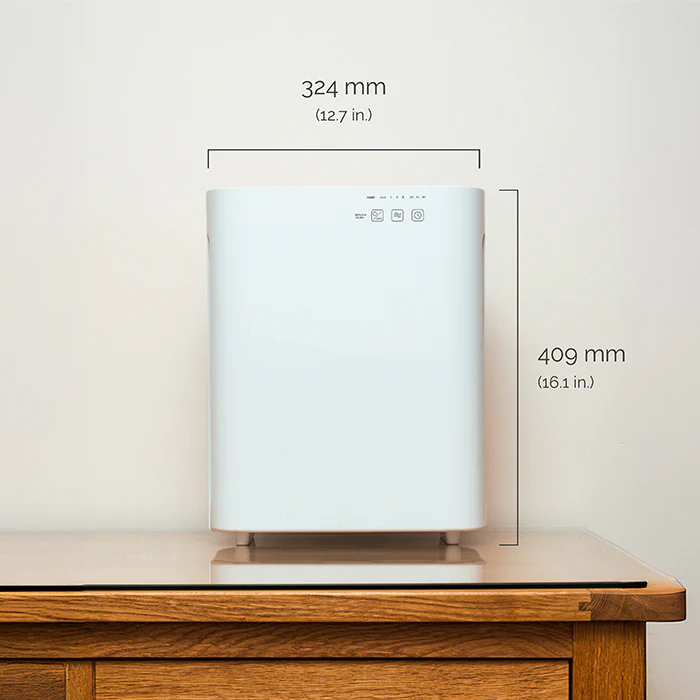
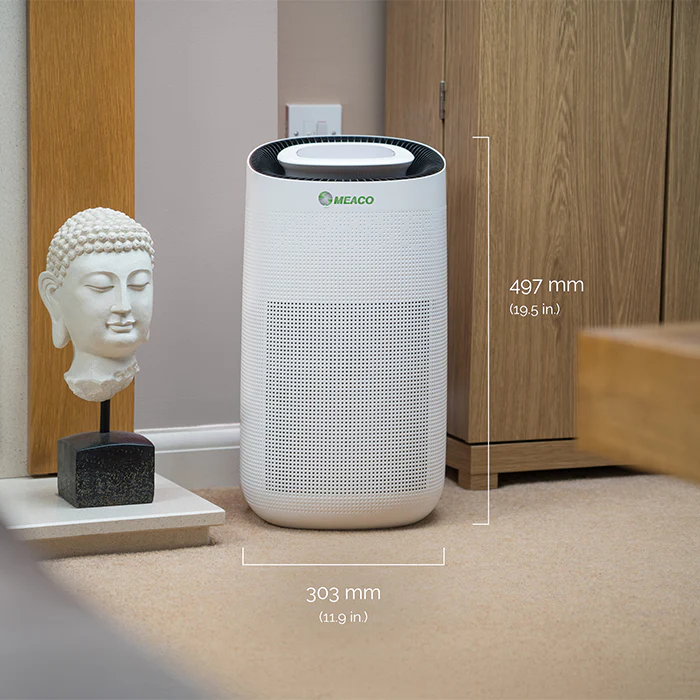
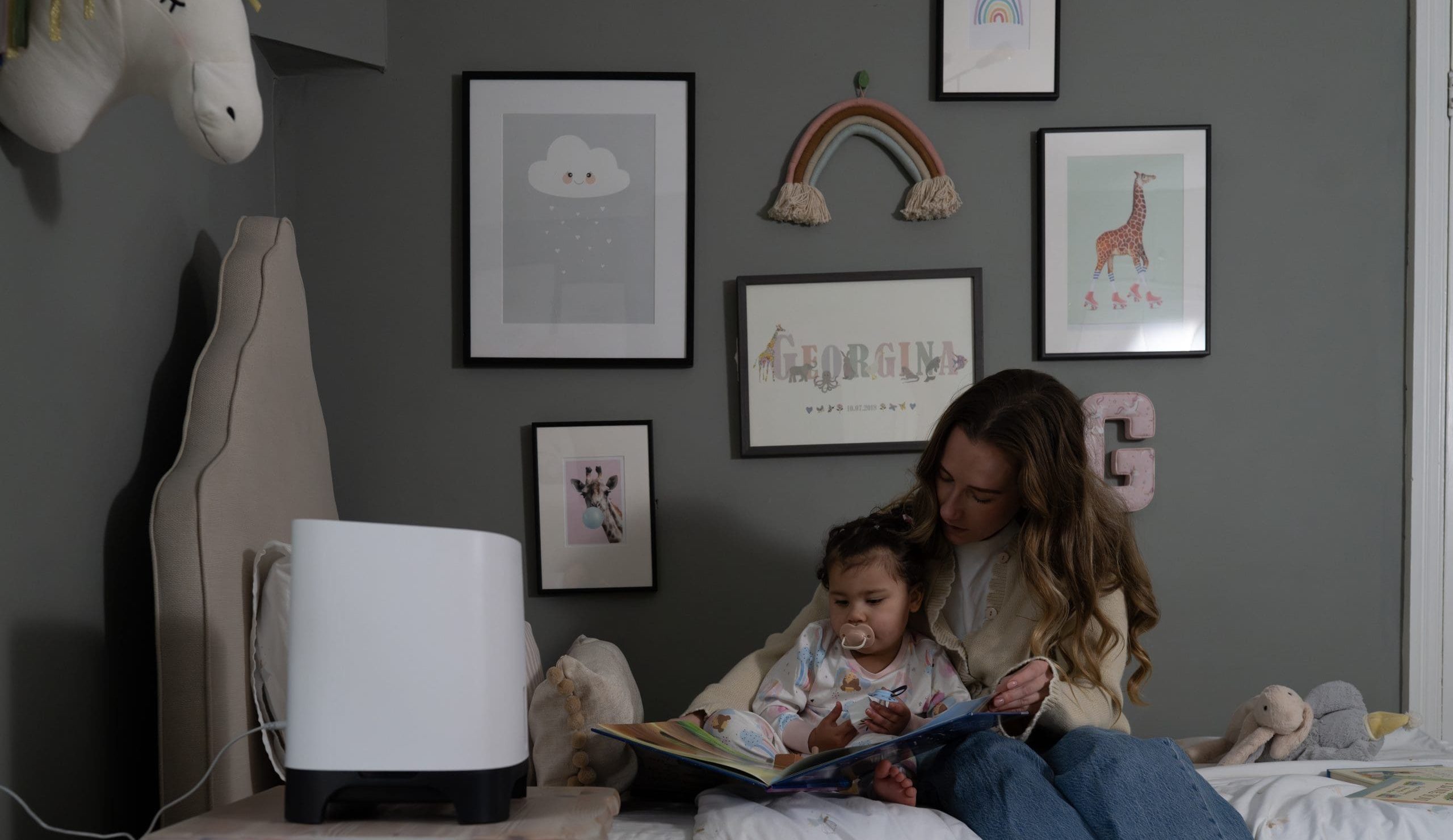



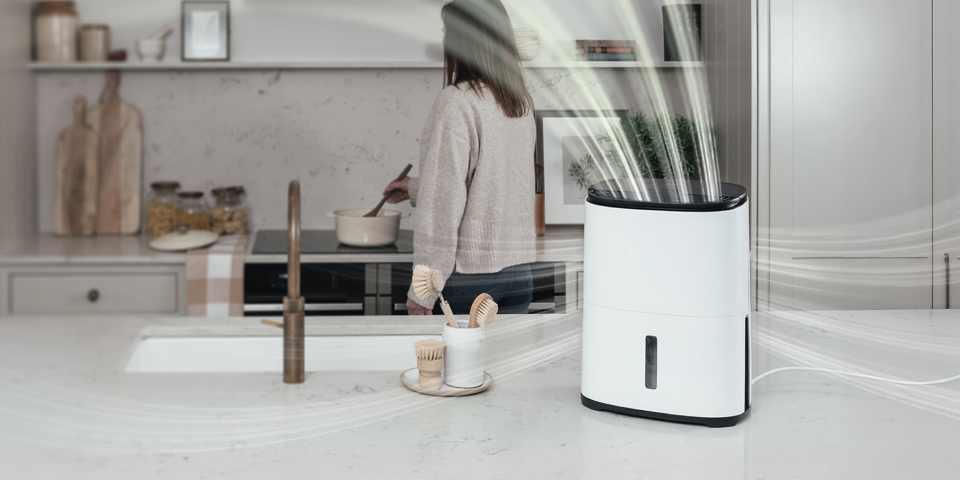
5 responses
Great breakdown of how air purifiers work and why they matter—really helpful for homeowners! As an HVAC technician, I often recommend air purifiers to clients with allergy or asthma issues, especially during spring and summer when indoor air quality can really take a hit. One tip: remember to check and replace your HEPA filters regularly—clogged filters reduce efficiency and airflow. Also, keep your HVAC system’s ducts clean so the purifier isn’t working overtime to compensate
Can you run a purifier at the same as running a dehumidifier?
Would running both at the same time compromise the efficiency of either or both devices?
Trevor,
Yes, you can run an air purifier and a dehumidifier at the same time without compromising the efficiency of either device.
A dehumidifier works by removing excess moisture from the air, helping to prevent dampness, mould, and condensation. An air purifier, on the other hand, focuses on improving air quality by capturing dust, allergens, and other airborne particles. Since they target different issues (moisture vs air purity) they do not interfere with each other’s performance.
For added convenience, the Arete dehumidifier includes a built-in air purification function with a HEPA filter, acting as a 2-in-1 solution. This means you can control humidity while also filtering out airborne particles, giving you both benefits in a single unit.
Hope that helps.
Omar@Meaco
If you have a dehumidifier with a hepa filter do you also need a purifier?
Sarah,
Thank you for your enquiry. A dehumidifier with a HEPA filter can help purify the air, that is reducing dust, allergens, and some airborne particles, but its primary purpose is to control humidity.
To decide whether you need both, it’s important to first assess your issue. If it’s mainly humidity-related, the dehumidifier will help, with air purification as an added bonus. If you’re dealing with allergies or pollutants in the air, you may need a separate air purifier to address those concerns more effectively.
I hope that helps,
Omar@Meaco